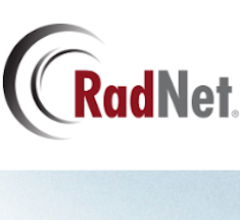
Getty Images
February 10, 2023 — Risk model-based lung cancer screening strategies, which select individuals based on personal risk, are more cost effective than current recommendations based solely on age and smoking history, according to a study led by the Cancer Intervention and Surveillance Modeling Network (CISNET) Lung Working Group, which includes researchers from The University of Texas MD Anderson Cancer Center.
The findings, published today in Annals of Internal Medicine, suggest that incorporating models of personal lung cancer risk should be considered for future recommendations by the U.S. Preventive Services Task Force (USPSTF).
“Findings from this study could be considered as a potential guide for the development of cost-effective risk model-based lung cancer screening under various settings and availability of health care resources,” said lead author Iakovos Toumazis, Ph.D., assistant professor of Health Services Research. “While the current recommendations are cost effective, our findings suggest that we can improve on these guidelines and provide more flexibility to include those most likely to benefit from lung cancer screening.”
Lung cancer is the leading cause of cancer death in the U.S. and the second most common cancer diagnosed annually, according to the American Cancer Society. The USPSTF currently recommends annual screening with low-dose computed tomography in adults aged 50 to 80 years who have a 20 pack-a-year smoking history and currently smoke or have quit within the past 15 years.
In this study, researchers analyzed two different risk calculator models. One estimates an individual’s six-year probability of developing lung cancer, and the other predicts the probability of a person dying from lung cancer within six years. In this study, the researchers used simplified versions for both models that considered only age, sex and smoking-related risk predictors.
The study found that risk model-based screening is cost effective regardless of which calculator was used, but also emphasized the importance of selecting a risk threshold that is specific to the calculator used. In addition, the researchers identified a range of risk thresholds that, when used to select people for screening, yield more quality-adjusted life years and cost savings relative to current USPSTF recommendations under various assumptions.
“Our model shows that personal risk-based screening for lung cancer is cost effective under a wide range of risk thresholds, offering flexibility for implementing risk model-based approaches in a variety of settings that have different health care resources available,” Toumazis said.
For more information: https://www.mdanderson.org/
Related Lung Imaging Content:
Special Report on Lung Cancer and Screening Initiatives
Special Report on Lung Cancer and Screening Initiatives, Part II
American Lung Association Addresses Awareness on World Lung Cancer Day
MRI Sheds Light on COVID Vaccine-Associated Heart Muscle Injury
What We Know About Cardiac Long-COVID Two Years Into the Pandemic
VIDEO: Long-term Cardiac Impacts of COVID-19 Two Years Into The Pandemic — Interview with Aaron Baggish, M.D.
VIDEO: Long-COVID Presentations in Cardiology at Beaumont Hospital — Interview with Justin Trivax, M.D.
VIDEO: Cardiac Presentations in COVID Long-haulers at Cedars-Sinai Hospital — Interview with Siddharth Singh, M.D.
Find more COVID news and videos
PHOTO GALLERY: How COVID-19 Appears on Medical Imaging
VIDEO: How to Image COVID-19 and Radiological Presentations of the Virus — Interview with Margarita Revzin, M.D.
American Lung Association Addresses Awareness on World Lung Cancer Day


 January 13, 2026
January 13, 2026 









